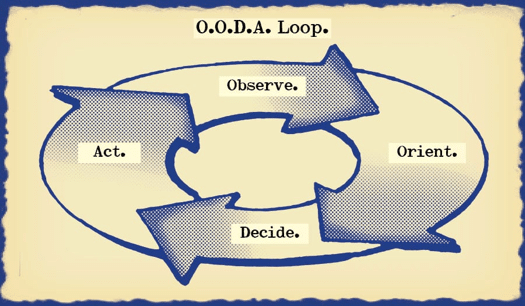When we consider mindset required to succeed in a rapidly transforming digital world, the word Agile tends to come up early and often. Agile has a long provenance in the digital world, beginning in 2001 with the publication of the Agile Manifesto and it’s profound and lasting effect on software development. But as the influence of software eating the world has grown into a business imperative for transformation, the meaning of agile has begun to change. For many looking to implement digital transformations agile has become synonymous with speed, and while these terms seem to share some common elements, it’s by revealing the differences between them that we can begin to develop a successful digital mindset.
Agility is about moving fast, but it’s also about moving nimbly and accurately. As businesses undertake the challenges of digital transformation the tendency is often to embrace speed over agility. The reasons for this are understandable. Speed means shorter timelines, fewer resources expended and potentially lower costs. But an approach that by prioritizes speed runs the risk of losing the immediate and long-term benefits that agility brings.
One of the best articulations of this tradeoff between speed and agility can be found in the OODA loop developed by John Boyd. A colonel in the US Air Force, Boyd was inspired by the dogfighting success of US F86 fighters over Soviet MiG-15’s during the Korean War. Researching this Boyd realized that while the MiG’s were the faster fighter, the F86’s success came from being more maneuverable and thus able to respond more effectively to changing situations.
From this discovery, Boyd developed the concept of the OODA, (Observe, Orient, Decide, Act), loop. The idea behind the OODA loop was to codify the natural advantages that the more maneuverable aircraft gave a pilot over a faster opponent. Under OODA pilots were trained not to act immediately at top speed, but instead to:
- Observe–Build situational awareness based on available data
- Orient–Form theories through analysis and synthesis
- Decide–Based on your perspective at the moment
- Act–Activity based on the decision


image credit: artofmanliness.com
While it’s obvious that the life and death decisions of a fighter pilot are made with great speed, it’s the agility of the decision making process that has made the OODA loop a successful mindset for responding to new and unknown situations in the air and in the new and unknown digital world.
Digital transformation is replete with the kind of uncertainty that the OODA loop was created to address, (though fortunately not the danger). All too often we are faced with unknown questions when assessing the potential of new products and services or digitally transforming existing ones. The mindset of the OODA loop, favoring agility and maneuverability over pure speed serves to help us understand, act, learn and succeed in conditions of regular uncertainty. Applying this mindset we:
- Observe–By rapidly accessing customer data and feedback loops
- Orient–Through creating testable customer-centric hypothesis
- Decide–Based on real data
- Act–Launch a new feature or product and then…
- Repeat
Unfortunately as non-digital businesses look to transform they often substitute speed for agility by going from Observe to Act without incorporating orientation and decision. What is lost here is not simply informed decision making, instead, it’s the capability to navigate an unknown territory that allows for the acceptance of new and unforeseen possibilities or opportunities. In addition, maintaining an agile mindset helps create a culture that supports learning from failure and the resiliency necessary for continuous exploration and growth. So when considering the mindset needed to succeed in a rapidly transforming world it helps to remember its fine to be fast, but it’s better to be agile.
To learn about Hult’s forward-thinking curriculum and Digital Strategy courses, download a brochure here.


Daniel Weingrod is a Professor of Digital and Social Media Marketing at Hult International Business School with years of consulting experience in digital marketing, social media, web development, search, analytics and online media. Dan’s latest focus is consulting with brands and businesses to build participation and driving innovation and creativity through the use of Lean and Agile methodologies. Dan has a wide range of experience with brands across multiple verticals including Bose, The Hartford, Prudential Securities, KonicaMinolta, AIG, Pitney Boews, M&M Mars, Humana, United Health Care and Aetna.
Explore the complexities and challenges of the marketing world with Hult’s Masters in International Marketing. To learn more, take a look at our blog Social media and the increasing importance of virtual networks in business, or get into broader business with a Masters in International Business instead. Download a brochure or get in touch today to find out how Hult can help you to explore everything about the business world, the future, and yourself.


